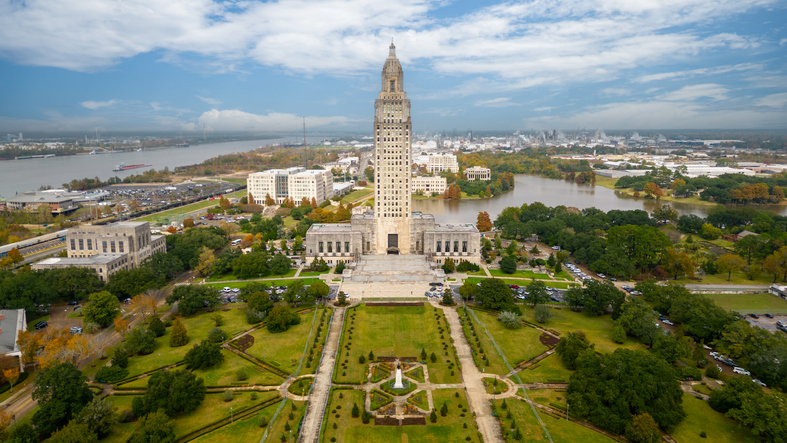Louisiana Is Latest To Create New Majority-Black Voting District
Louisiana Becomes Latest State To Create New Majority-Black Voting District

Source: CRobertson / Getty
On Wednesday, the Louisiana Senate passed a new congressional map that would create a second majority-Black voting district in the state.
Senate Bill 8 will now advance to the House chamber for debate.
Black voters in Louisiana have long argued that the current congressional map discriminated against Black voters, who make up one-third of Louisiana’s population
Notably, both Democrats and Republicans have supported this bill, but some conservatives voted for the map reluctantly.
“Unfortunately, we must pass this map before us instead of giving the pen to a heavy-handed, Obama-appointed judge who seeks to enforce her will upon us,” Sen. Jeremy Stine, R-Lake Charles, told the Louisiana Illuminator.
On Jan. 16, Lousiana lawmakers met for the second day of the state’s special redistricting meeting where they discussed the proposal that would shift the current district represented by Republican U.S. Rep. Garret Graves, into a majority-Black district.
According to the Associated Press, GOP state Representative Glen Womack, the lawmaker behind the legislation, asserted that race was not the primary consideration in determining the new boundaries. Instead, he emphasized that “politics drove this map,” to secure the reelection of Louisiana’s congressional leaders, U.S. House Speaker Mike Johnson and Majority Leader Steve Scalise.
Graves was reportedly unhappy with Womack’s proposal, but there are benefits to the pending plan. Under the existing district map represented by Graves, 23% of the voting-age population is Black. If the suggested map is adopted, this figure would surge to 54%.
Black voters in Louisiana are disproportionately impacted by the current map’s plan. There are “white majorities in five of six congressional districts despite Black people accounting for one-third of Louisiana’s population,” the outlet noted. Currently, the sole majority-Black district, which covers a significant part of New Orleans and Baton Rouge, is represented by U.S. Rep. Troy Carter, who is the state’s solitary Black and Democratic member of Congress. Officials will have until Jan. 30 to pass a new plan for congressional boundaries. If they do not meet the deadline, a district court will hold a trial and “decide on a plan for the 2024 elections,” according to a November court order.
Alabama was approved for a second majority-Black voting district last year.
In October, Alabama residents were given a second majority-Black voting district after a federal court approved a fresh congressional map for the state’s southeastern region. This move aims to enhance representation for Black voters. Prior to the approval of this new district, Black Alabamians, constituting 27% of the state’s population, had representation in just one of the seven congressional districts. The court considered three proposed plans for the new congressional maps, all designed by Richard Allen, a court-appointed special master. These maps are slated for use in the upcoming 2024 elections.
SEE ALSO:
What Is Redlining And How Can It Be Solved?
40 Acres And A Mule: What Are Reparations And Why Is The Concept So Polarizing?
















